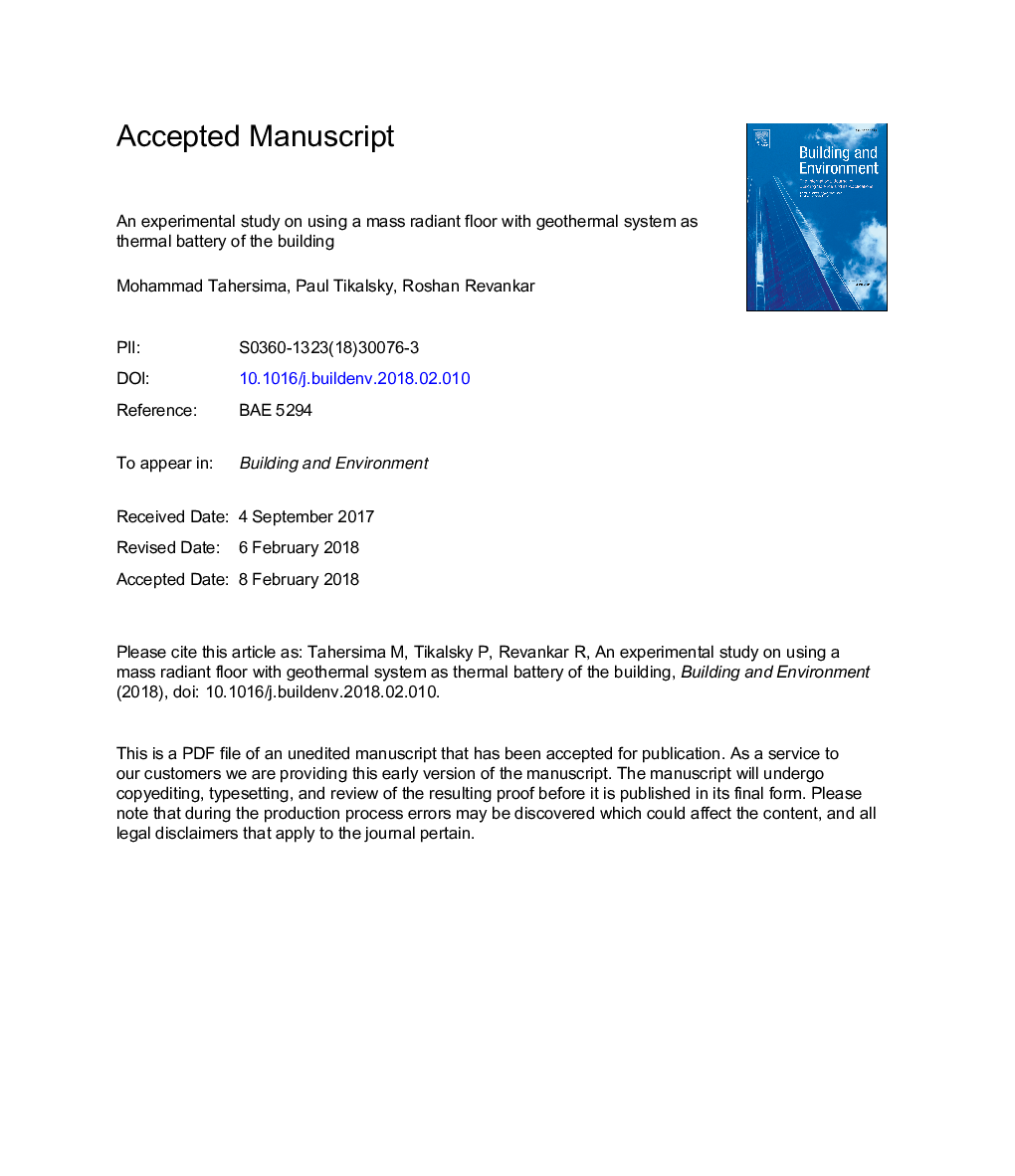| Article ID | Journal | Published Year | Pages | File Type |
|---|---|---|---|---|
| 6697833 | Building and Environment | 2018 | 30 Pages |
Abstract
Storing thermal energy in mass concrete floors would have a major impact on the stability of the temperature in buildings. The concept of a thermal battery refers to storing the supplied radiant heat and releasing this heat the next day through radiation and convection. In this study, an approach is introduced to examine the idea of thermal battery in thick concrete flooring (1.22â¯m) using the earth as a heat source. Controlled experiments were built and conducted on an instrumented 3000â¯m2 industrial facility. The heating radiant floor combining with ground source system was operated during off-peak hours and the air conditioning system was disabled for 24â¯h during the test period. The heat pumps were operated in single stage using less power compared to when operated on demand. Indoor air temperature showed that 100â¯Â°F (37.78â¯Â°C) supply temperature at the ground source heat pump would be enough to maintain a stable warm temperature during cold days. Two weather conditions in the winter were selected to do the tests. The second test had a colder ambient temperature to verify the procedure. The indoor air temperature showed that the night heating system performs well for both cases because it maintained a constant temperature for the entire operational day even in the daytime when every heating unit was off. This approach of applying the heating at nighttime with lower electricity rates would lead to significant operational cost savings in the building.
Related Topics
Physical Sciences and Engineering
Energy
Renewable Energy, Sustainability and the Environment
Authors
Mohammad Tahersima, Paul Tikalsky, Roshan Revankar,
